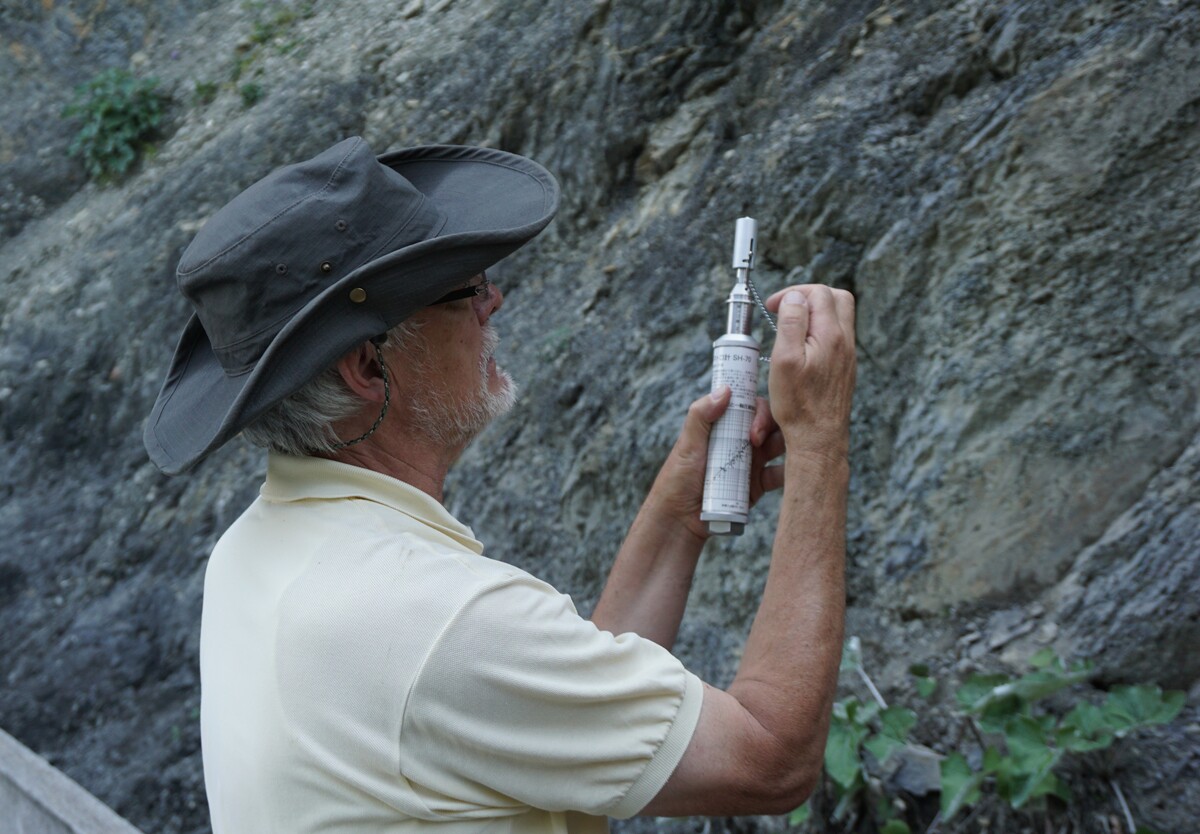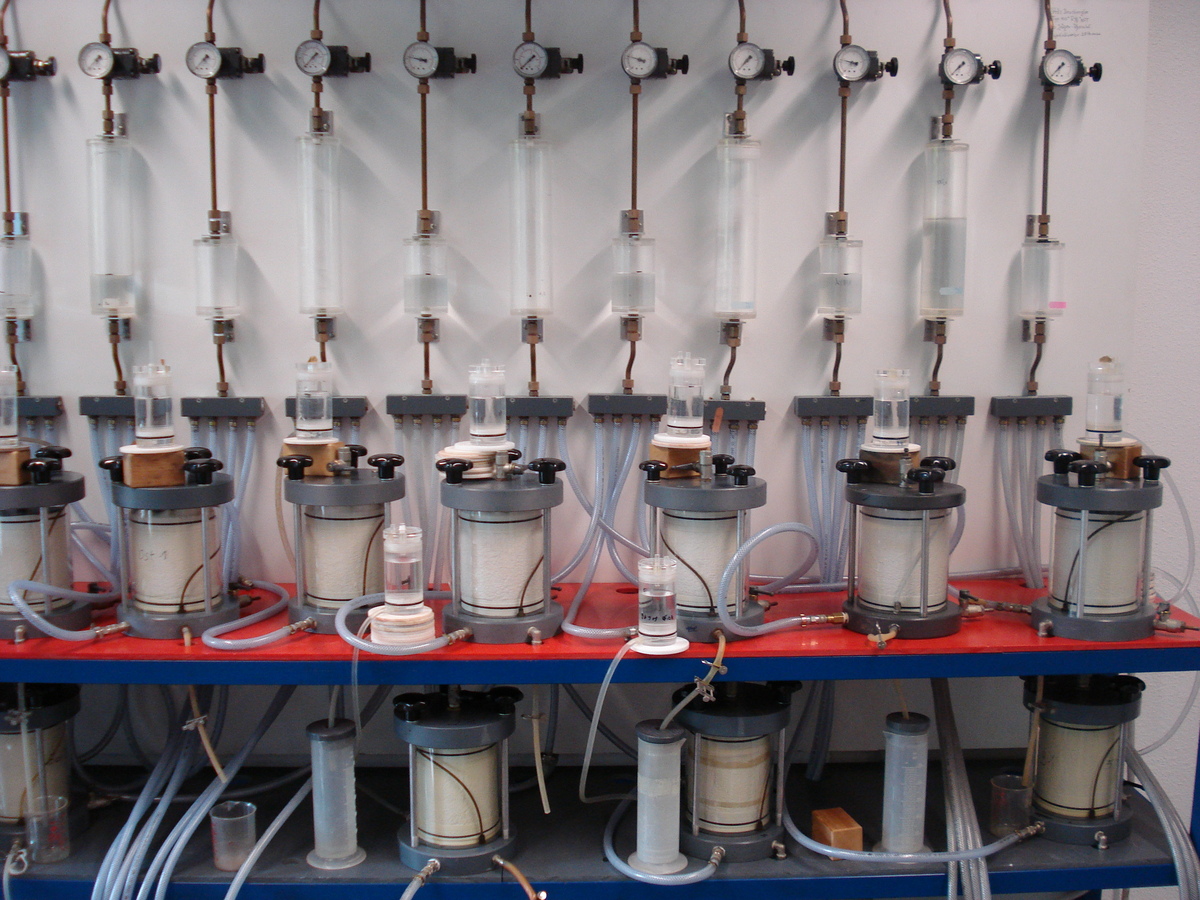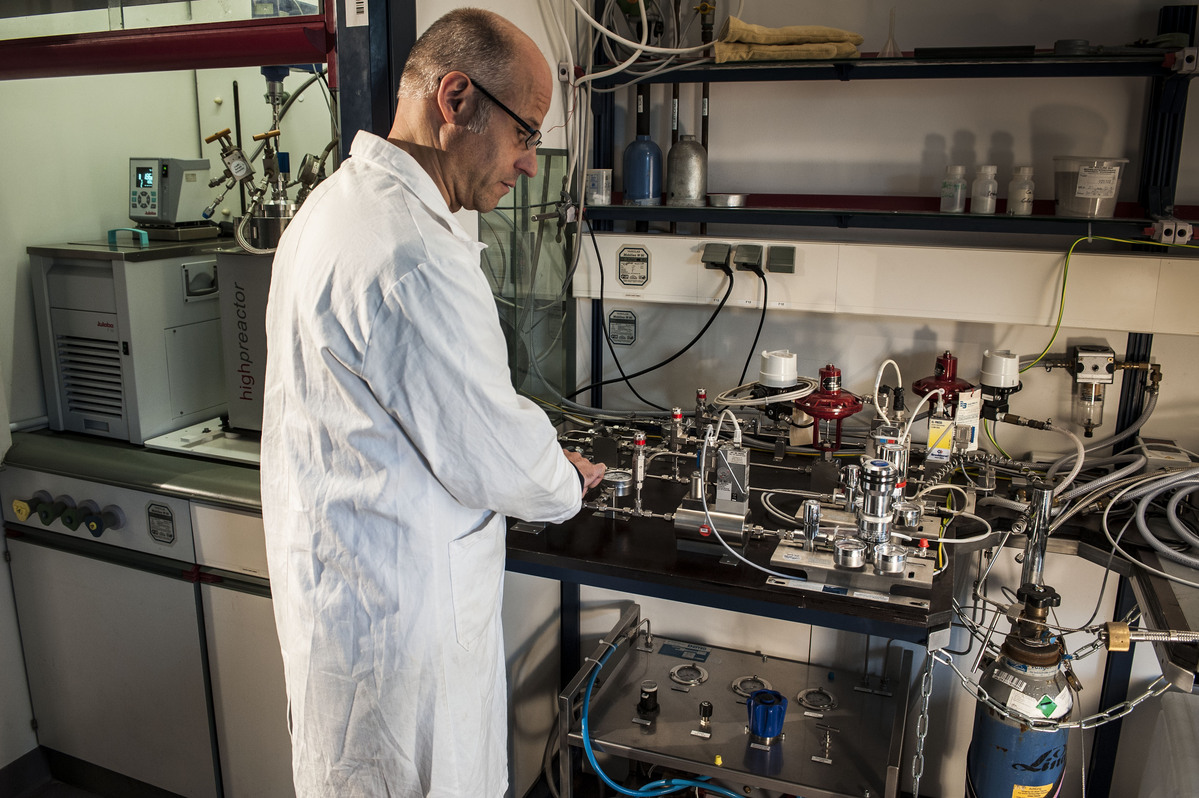Soil-Lab
The characterisation of soils, rocks and building materials is an essential part of all engineering geological questions. Without the knowledge of decisive parameters and parameters a reliable assessment of site conditions and processes is not possible. Furthermore, these parameters are important and necessary input parameters into engineering geological models. For this reason, we attach great importance to comprehensive data collection on the basis of established standards and measuring methods, both in student training and in the processing of research projects. Starting with sampling and sample storage up to the execution of measurements, guidelines are consistently observed. A further focus, especially in the course of research projects, is the development of target-oriented test facilities in order to obtain reliable data that can be used to solve specific, as yet unsolved problems. With our laboratory and off-site facilities we are able to carry out a large part of measuring procedures and investigation methods.
For research and teaching, as well as for cooperation with industrial partners, the interdisciplinary Soil Lab is equipped with extensive measuring instruments and test facilities, so that a wide range of test methods from small-scale structural investigations to large-scale test fields can be covered.
Field devices
Density determination: For the determination of density a sand replacement device and a piercing cylinder are available.
In-situ shear strength: The shear strength can be determined directly in the field using a vane probe.
Distance measurement: With the help of the convergence measuring device, distances between two permanently installed measuring points can be measured precisely. For this purpose, a convergence measuring device from Glötzl is available.
Levelling: With our levelling tachymeter Zeiss Ni42 measuring points are measured very accurately and integrated into a local or supra-regional coordinate system.
Pile core sounding: For the soil investigation a comprehensive ram core probing equipment is available. For this purpose, both electrically and fuel-operated hammer drills as well as probes with different diameters are available.
Dynamic probing: By means of dynamic probing, conclusions can be drawn about the storage density of non-cohesive soils.
Strength investigation: We have pocket penetrometers, needle penetrometers and a Schmidt-Hammer at our disposal for investigating the strength properties of rocks (loose and solid rocks).
Laboratory equipment
Density: In engineering geology, density is a decisive variable. For its exact determination, we have various measuring methods at our disposal, such as the percussion fork test for determining the densest / loosest bedding (DIN 18126) as well as the immersion weighing according to DIN EN ISO 17892-2.
Electrokinetic measuring cell: The remediation of contaminated cohesive soils is still a great challenge today. Electrokinetic soil remediation is a promising and effective method in this context. Electrokinetic measuring cells are available to determine site-specific issues in the run-up to remediation.
Enslin-Neff device: The water absorption capacity is determined in our Enslin-Neff devices.
Condition limits/consistency limits: For the determination of the state limits we have a falling cone device as well as yield point devices according to Casagrande at our disposal.
Hydraulic permeability: The knowledge of hydraulic permeability is essential not only in hydrogeology but also in engineering geology and geothermal energy. Therefore, we have different measuring methods at our disposal such as the Kast measuring device, the air permeameter TinyPerm 3 as well as triaxial measuring cells according to DIN 18130-1 to determine the hydraulic permeability.
Carbon sulphur content: For the determination of the carbon/sulfur content we have the Carbon Sulfur Analyzer CS500 from ELTRA.
Methylene blue adsorption: For the detection of the swellable three-layer clay minerals in a soil we use the methylene blue adsorption method.
loss on ignition: The loss on ignition is determined in our laboratory with a muffle open according to DIN 18128.
Proctor density: The Proctor density, which is carried out in our laboratory according to DIN 18127 in the Proctor test facility, serves as a reference value for assessing the storage density of a floor.
Grain density: For the determination of the grain density we have numerous capillary pycnometers at our disposal.
Pore opening width: The pore opening distribution is a decisive variable in all transport processes taking place underground. To determine the pore spectrum, we have a mercury porosimeter AutoPore IV from Micromeritics.
Rock strength: To determine the strength of rocks we have different measuring methods at our disposal, such as frame shear test, triaxial compression test, point load test, Schmidthammer, vane probe and penetrometer.
Carbonate content: The carbonate content is determined in our laboratory according to DIN 18129 in aCO2 gasometer according to Scheibler.
Batch tests: We have shaking tables and an overhead shaker for carrying out shaking tests.
Grain size distribution: For the determination of the particle size distribution according to DIN 18123 we have a sieve system and aerometer.
Ultrasonic measuring device: We have an ultrasonic measuring device from proceq (TICO) for the non-destructive testing of backfill materials with regard to cavities, cracks, frost effects, strength and modulus of elasticity.
viscosity: Viscosity can be measured in our laboratory with the Brookfield DV-II+ viscometer.
Water chemistry: For the determination of the main and transition elements we have a flame AAS (Shimadzu, AA-7000) with autosampler and microsampling and an AAS from Perkin Elmer (3030B). Furthermore, we have a photometer Nanocolor 500D at our disposal. Furthermore, physicochemical parameters of water such as pH value, redox potential and electrical conductivity can be measured with WTW instruments.



